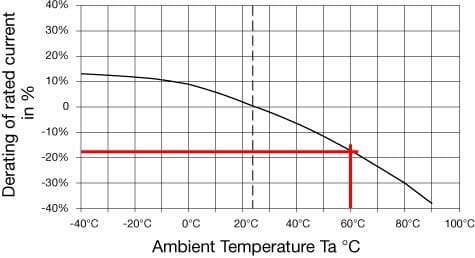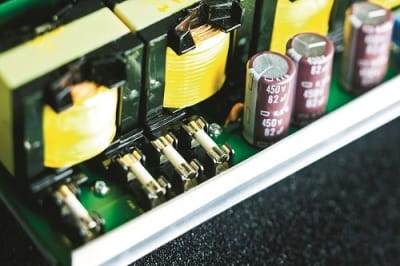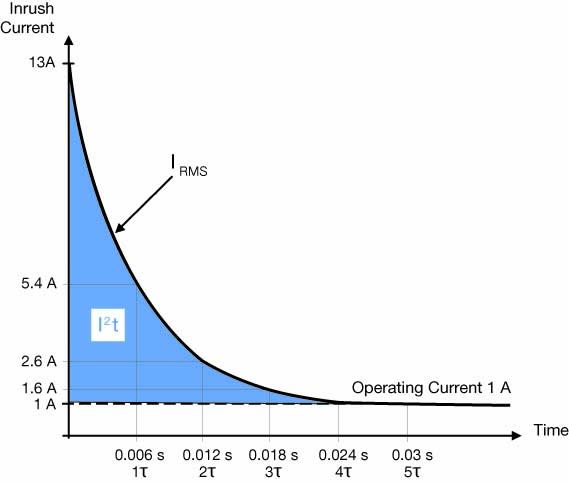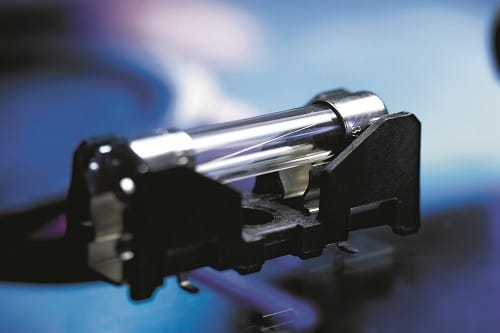Finding the Right Fuse!
Follow articleHow do you feel about this article? Help us to provide better content for you.
Thank you! Your feedback has been received.
There was a problem submitting your feedback, please try again later.
What do you think of this article?
An inadequately thought out selection of fuses can lead to the breakdown of equipment and installation, resulting in high replacement costs and dissatisfied customers. This article from our good friends at SCHURTER focuses on the correct selection criteria for fuses and fuse holders, and helps to take the more important aspects into consideration.
The function of a fuse is to interrupt an uncontrolled fault current or overcurrent before serious damage can occur. Because a fuse is designed using a fusing element, it is particularly suited for reliable interruption of short-circuits.
Normal operation after switching ON
Under normal operating conditions, a fuse is subjected to a maximum operating current and a maximum operating temperature. A derating of the rated current is therefore usually necessary since a fuse is rarely operated at the set ambient temperature of 23 ˚C. As an example, let’s look at a scenario using a time-lag SMD fuse such as the UMT 250 from SCHURTER. With an operating temperature of 60 ˚C the fuse needs to be derated by 17%, i.e., when the operating current is 1 A @ 60 ˚C, a rounded-up fuse value of 1.25A (1A / 0.83) is necessary. Fuses can be in accordance with IEC 60127 or UL 248-14. Because of the different definitions between the two standards, fuses are not directly interchangeable as follows: fuses in accordance with IEC 60127 may be operated continually at 100% of the rated current value, whereas fuses in accordance with UL 248-14 only at 75%.
Figure 1: The de-rating curve of the time-lag SMD fuse UMT 250.
Figure 2: Fuses mounted into holders can influence each other with regards to temperature.
In-rush current peaks
This point is only necessary with capacitive loads, present when the charging of capacitors after switching ON, leads to high in-rush current peaks and the rated current of the fuse is exceeded by many multiples. These pulses can be many multiples of the rated current of the fuse, but are mostly of a very short duration.
Figure 3: Typical switch-on curve of an SMPS when capacitors need to be charged.
The melting integral or I2t value is defined as that amount of energy necessary to heat up and melt a wire or fuse element. SCHURTER provides the melting integral value in the catalog for each fuse type and rated current. In-rush pulses, particularly when they occur often, cause fuses to age prematurely. This can lead to failures in the field later on, which can be avoided using calculations. In order to obtain a high I2t, time-lag fuses usually have a tin-plated melting wire. Over time, the tin diffuses in the wire, which leads to a change in the time/current characteristic of the fuse. In general, quick-acting fuses are more resistant to pulses than time-lag, but time-lag fuses need to be used because of their higher I2t capability values than those for quick-acting versions.
Figure 4: Versions of UMT 250 with details of the melting integrals, voltage drops and power losses for every current rating.
Combination of fuses and fuse holders
5x20 mm fuses are used widely in industrial applications, since they are easily available worldwide and can be replaced by the end customer or a service technician. In applications such as these, a fuse holder is usually needed. Like fuses, the difference between IEC and UL standards also needs to be observed when selecting fuse holders. The maximum rated current with UL is usually higher than IEC. The IEC consideration is closer to reality. The UL/CSA really only tests the fuse holder itself, which does not simulate real world application.
The fuse standards (IEC 60127-2 to 4) check general electrical properties. The standard for fuse holders (IEC 60127-6) checks thermal properties.
Therefore, the customer is obliged to carry out his own calculations.
For further information and details, you can read the full article by clicking either of the links below (in English or German). And remember that, even after reading these fantastic guides, extensive tests under worst-case conditions are critical in order to ensure safe and reliable operation in equipment and installations.







Comments